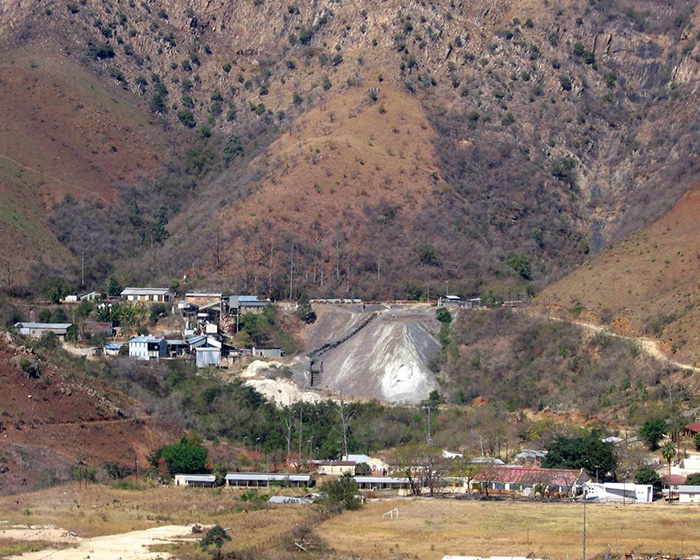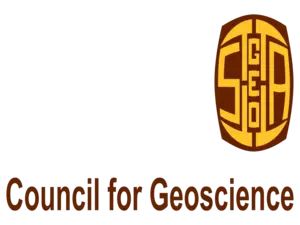by: P.J.A. Bosch, N. Moabi and S. Makubalo
1: Introduction
A report on a possible hazardous underground fire at Sehlakwane (see attachment) was received by the Council for Geoscience on 28 July 2016.
On receiving the details of the report, P. Bosch, N. Moabi and S. Makubalo decided to investigate the occurrence. The immediate thoughts on the details provided were that the area was or is underlain by naturally occurring peat and that it is possible that this peat has dried out due to the prolonged heat and drought. It is therefore possible that the peat may have caught fire. The extension of this possible peatland is not known and it might be that it extends into occupied property within the area. It was decided to investigate the area as soon as possible to determine whether in fact it is peat burning and if it is of concern that it might extend to occupied property. The following preliminary actions were proposed: A trench or trenches should be excavated in the vicinity (with safety as a concern) of the area that is burning to establish the nature of the material that is burning.
If it indeed is peat the immediate extent of the peat should be delineated as well as the thickness of the deposit. To contain the fire it would be suggested that trenches could be excavated around the area to contain the burning. Depth and width of the trench would be determined by the depth and thickness of the peat. In addition, the trenches may be filled with water to help prevent the burning spreading. The trenches should be fenced off. The general area should also immediately be fenced to prevent entry by animal and unauthorized people to prevent possible injury. The burning area and trenched area should be monitored regularly to confirm whether the proposed trenching stopped the spreading of the smouldering fire and this should take place until there are no longer signs of any smoke emanating. If the proposed method does not work, further mitigating steps should be taken, but it is envisaged that if it is indeed peat it will be contained or it may naturally peter out.
The area was visited by the Council for Geoscience on 11 August 2016 by P. Bosch and N. Moabi. On arrival at the locality they were briefed by Mr. Leso of the Department of Nature Conservation.
2: Observations
During the briefing and the visit it was established that the personnel of the CGS were mostly in agreement with the conclusions regarding the nature of the fire and the mitigating steps taken by Mr. Leso.
The following was noted at the area, see also Figure 1:
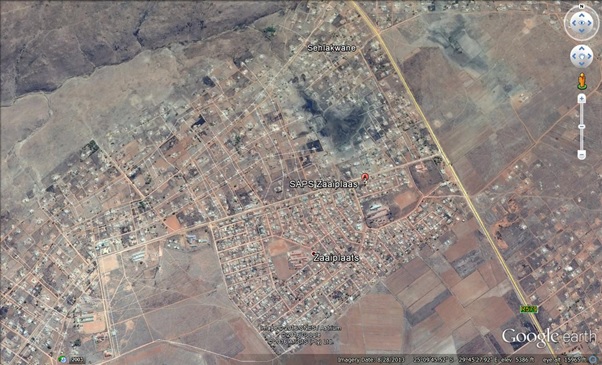
1: The soil in the area was underlain by a 10 cm to 30 cm thick dark brown, organic-rich peat-like substance which is very light and apparently highly porous.
2: The area was dried out as indicated by the presence of big cracks in the soil (figure 3).
3: The area which burned could be seen due to the presence of light grey coloured ash and some subsidence (figure 2).
4: No smoke or fire or any traces of heat could be found due to the fact that shallow trenches was dug on the sides of the burning area and this was watered and the burning peat was extinguished by fire of the fire brigade. Signs of wetness due to the work of the fire brigade were still evident.
5. The vegetation in the immediate vicinity of the peatland was heavily grazed and the soil might have been loosened by grazing animals.
6: Near the upper extremes of the peat (wetland) a trench was seen which was filled by water, possibly through seepage of the water from the peat into the trench.
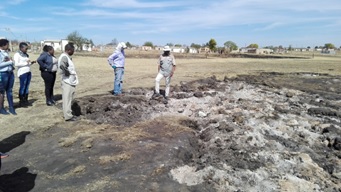
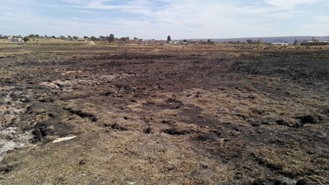
3: Conclusions
1. Apparently a field fire ignited the peat, which would under normal circumstances not burn as it is normally moist.
2. The drying of the peat resulted from the prolonged drought and very high temperatures experienced during the summer of 2015/2016. However, the extreme drying out of the peat could have been enhanced by the poor cover of grass and disturbance due to grazing of the vegetation. The upper layers of soil could also have been disturbed and peat was exposed by this disturbance and the cracking of the soil. Furthermore the headwaters that feed the lower portions of the wetland were probably partially influenced by the practice of making excavations to catch the water that normally slowly seeps downwards through the peat.
3. It is thought that the above normal temperatures and prolonged drought caused the ignition of the peat by a veld-fire. The activity of humans and grazing animals further exasperated this event which would under normal natural circumstances not easily occur.
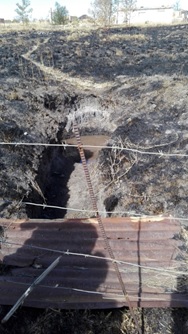
4: Recommendations
It is thought that the area would return back to normal given enough time and normal average rain. However, to assist and enhance natural processes it is recommended that human activities should be minimized in the area and that animals should be prevented from entering the area until it has stabilized.
Although the fire and burning of the peat apparently stopped, the area should be monitored by the local authorities in case the peat starts burning again to prevent further injuries to humans and animals.
Prepared by:
Pieter Bosch and Neo Moabi (Geologists)
Sisanda Makubalo (Intern)
Council for Geoscience
Pretoria

